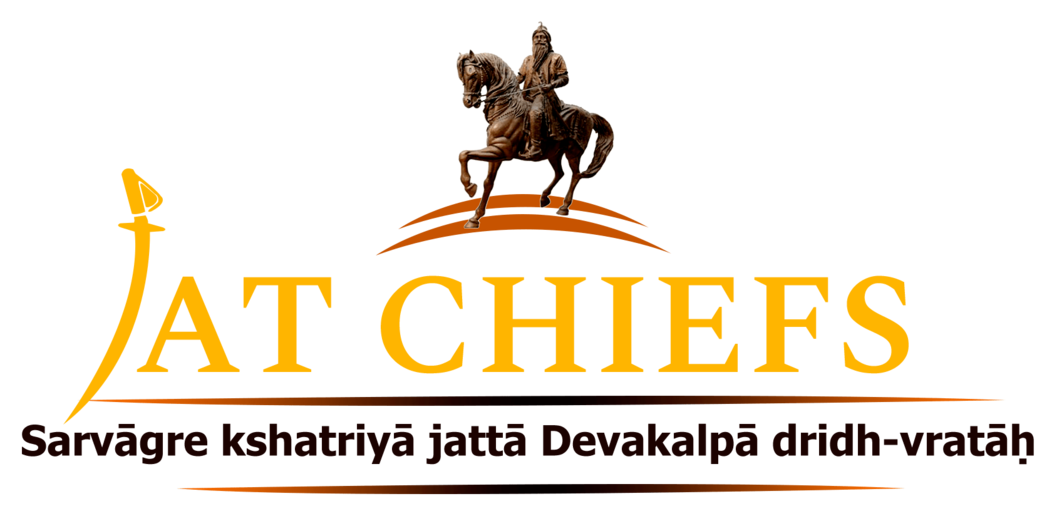Sardar Chait Singh Bhangi of Lahore, After Lehna Singh’s death his son Chait Singh became the head of the family and captured all the territories which had been under Lehna Singh. He remained in the possession of Lahore with his other companions.” But this success was not for long time, because Shah Zaman again crossed the river Ravi and reached Lahore, in 30 November, 1798. In such circumstances Chait Singh along with Mohar Singh left the city before the Shah’s approach and Shah Zaman captured the city without any resistance. ’’ After a few months Shah Zaman decided to return to Kabul to solve troubles of local nature in Afghanistan and left Lahore in December 1799. After the departure of the Shah’s Chait Singh along with Milkha Singh and Mohar Singh, marched from Amritsar in the night between 3 and 4 January, 1799 and encamped in the neighborhood of Lahore. So twenty six days after Shah Zaman’s exit from Lahore on January 4, 1799 the Bhangi Sardars re-entered Lahore and reestablish Sikh rule again in the city.’ But the three rulers of Lahore were not functioning in collaboration with one another and their mutual dissensions adversely affected the Law and order situation in the city.’ The new Governors of Lahore possessed neither the talents nor the capabilities to rule over the country which they need inherited along with the subjects entrusted to their care. Chait Singh was an imbecile, while Mohar Singh exercised little influence over the people.”
Sardar Chait Singh Bhangi of Lahore , After Lehna Singh’s death his son Chait Singh became the head of the family and captured all the territories which had been under Lehna Singh. He remained in the possession of Lahore with his other companions.” But this success was not for long time, because Shah Zaman again crossed the river Ravi and reached Lahore, in 30 November, 1798. In such circumstances Chait Singh along with Mohar Singh left the city before the Shah’s approach and Shah Zaman captured the city without any resistance. ’’ After a few months Shah Zaman decided to return to Kabul to solve troubles of local nature in Afghanistan and left Lahore in December 1799. After the departure of the Shah’s Chait Singh along with Milkha Singh and Mohar Singh, marched from Amritsar in the night between 3 and 4 January, 1799 and encamped in the neighborhood of Lahore. So twenty six days after Shah Zaman’s exit from Lahore on January 4, 1799 the Bhangi Sardars re-entered Lahore and reestablish Sikh rule again in the city.’ But the three rulers of Lahore were not functioning in collaboration with one another and their mutual dissensions adversely affected the Law and order situation in the city.’ The new Governors of Lahore possessed neither the talents nor the capabilities to rule over the country which they need inherited along with the subjects entrusted to their care. Chait Singh was an imbecile, while Mohar Singh exercised little influence over the people.”
Mian Ahiq Muhammad, the father-in-Law of the unfortunate man and his colleague, Mian Mohkam Din were much distressed at hearing this and taking with them Chaudhri Kuka, Ashraff Khan and many other influential Muhammadans of the city, went in a body to Chait Singh to convince him of Badr-ud-Din’s innocence and to obtain his release. They failed, however, to obtain a hearing and were summarily dismissed from the presence of the Sardar,who with an air of arrogance had recourse to insulting language. The Chiefs returned, greatly disappointed and highly incensed at the haughty conduct of the Sardar and swore vengeance against Chait Singh and his friends the Chhatris, the originators of trouble. Negotiations were kept up for nearly a month to obtain Badr-ud-Din’s release, but without avail. All attempts to obtain redress having failed, it was at length resolved to have recourse to other means. A petition was drawn up, signed by Hakim Hakam Rai, Bhai Gurbakash Singh, Mian Ashiq Muhammad, Mian Mohkam Din, Muhammad Bakar, Muhammad Tahir, Mufti Muhammad Mokarram, Mir Shadi and other leading citizens of Lahore and addressed to Ranjit Singh. These citizens saw no other way out of this anarchy except calling on Ranjit Singh and inviting him to take over Lahore.”
According to Henry T Prinsep, in order to prepare the way for the success of his scheme, Ranjit Singh deputed Qazi Abdur-rahman a native of Rasulnagar to open an intrigue with some of the principal Mussalman inhabitants. Mir Mohkam Din the manager for Cahit Singh with Muhammad Ashiq and Mir Shadi were won over to assist the project. They promised on the approach of Ranjit Singh to open one of the gates to him.”
With the ambition of capturing the city, Ranjit Singh marched upon Lahore with his mother-in-law Sada Kaur. When Ranjit Singh entered the city of Lahore through Lahori gate he found that it was strongly defended by Chait Singh. On the next day July 6, 1799 Bhatti Jat ruler Maharaja Ranjit Singh of Lahore triumphantly entered in the city of Lahore. Chait Singh Bhangi, who was in possession of the fort of Lahore, continued exchanging fire from within the fort with Ranjit Singh forces. But soon Ranjit Singh won over Chait Singh, through the mediation of Sada Kaur who assured to Chait Singh that if he would vacate the fort, he would be treated kindly and would permitted to take all his movable property with him to his Jagir at Vanyeki (in the Pargana of Ajnala) where he could live in peace and comfort. On this assurance Chait Singh agreed and evacuated the fort on July 7, 1799 ” and continued hold the annual Jagir of 60,000 rupees in Vanyeki till his death which occurred in 1815. He left no son by any of his eight wives, but four months after his death Hukam Kaur gave birth to a son, named Attar Singh, in help of whom Ranjit Singh released a Jagir of 6, 000 rupees at Vanyeki Village the same was, afterwards much reduced.
References :-
- Abstract of a letter of 4 December 1797, Poona Residency Correspondence, 1774-99 (Ed.by Jadunath Sarkar), Vol-VIII, p. 63, Preserved in Punjab State Archive, Patiala (after here given as PSAP); Khushwagat Rai, Tarikh-i-Halat-i-Sikhan, folio no. 126, DPHS, PUP; Ali-ud-Din Mufti, Ibrat Nama, folio no. 293, DPHS, PUP; Sohan Lal Suri, Umdat-ut-Tawarikh, Dafter-U, pp. 51-52.
- The Rise Growth And Fall Of The Bhangi Misal by Dalbir Singh (2010)
- Syed Muhammad Latif, History of the Panjab, pp. 348-49.
- H.T. Prinsep, Origin of the Sikh Power, p. 41.


